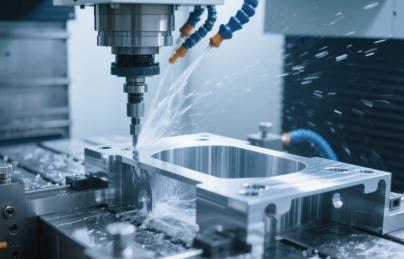When Strength Meets Elegance: The Challenge of Thin Steel Walls
There's something almost poetic about transforming robust steel into delicate, thin-walled structures that defy their material nature. Thin wall steel machining represents one of manufacturing's most fascinating paradoxes - taking one of humanity's strongest traditional materials and crafting it with the precision of a watchmaker. Typically defined as steel components with wall thickness below 2mm, these parts combine the inherent strength of steel with lightweight characteristics that modern industry desperately needs. As I've witnessed in countless projects, the journey from solid steel block to elegant thin-walled component is both an engineering achievement and an artistic pursuit.
The Steel-Specific Challenge: Why Thin Walls Test Our Limits
Steel's very strength becomes its greatest challenge in thin-wall machining. Unlike aluminum or plastics, steel fights back with higher cutting forces, greater tool wear, and more significant thermal expansion issues. The material that has built our skyscrapers and bridges suddenly becomes as temperamental as a prima donna when we ask it to become thin and delicate.
Through years of specializing in CNC machining services for challenging applications, we've identified three fundamental challenges unique to thin-wall steel:
- Vibration Symphony: Steel's density and stiffness create perfect conditions for harmonic vibrations that can destroy surface finish and dimensional accuracy
- Thermal Dance: Steel's lower thermal conductivity means heat concentrates in the cutting zone, causing expansion and subsequent contraction distortions
- Stress Memory: The material remembers every cut, storing residual stresses that can manifest as warpage long after machining is complete
Mastering the Steel: Technical Solutions That Deliver
Overcoming thin-wall steel challenges requires a blend of scientific precision and almost artistic intuition. Our approach to thin wall machining solutions has evolved through both success and failure, developing techniques that transform potential disasters into reliable processes.
The Tooling Trinity: Geometry, Coating, and Strategy
Standard cutting tools simply can't handle the unique demands of thin-wall steel. We've found that sharp, polished cutting edges with specialized geometries reduce cutting forces by up to 40% compared to conventional tools. TiAlN-coated end mills withstand the intense heat generation, while variable helix designs break up harmonic vibrations that plague thin-wall operations.
The Thermal Management Balancing Act
Steel's thermal characteristics demand innovative cooling approaches. Through extensive testing, we've perfected high-pressure coolant delivery systems that penetrate the cutting zone at pressures exceeding 80 bar. For particularly delicate operations, we've developed pulsed coolant techniques that alternate between cooling and clearing, reducing thermal shock by 35% while maintaining dimensional stability within 0.015mm.

Transforming Challenges into Competitive Advantage
What begins as a manufacturing challenge becomes a strategic advantage for our clients. The ability to reliably produce thin-wall steel components opens doors to markets and applications where weight reduction without strength compromise is paramount. There's genuine satisfaction in watching a client's face when they hold a steel component that feels impossibly light yet meets all their structural requirements.
Our journey with a leading aerospace supplier illustrates this transformation perfectly. They came to us with a steel mounting bracket that was causing repeated failures due to weight-induced stress. Through our specialized lightweight thin wall parts expertise, we re-engineered the component with strategic ribbing and varying wall thicknesses, reducing weight by 48% while increasing stiffness by 15%. The solution didn't just solve their immediate problem - it became a selling point for their entire product line.
"The weight savings translated to extended mission capabilities that our sales team now features prominently in customer presentations. What was once a problem child became our star performer."
The Human Element: Where Experience Meets Innovation
No amount of technology can replace the intuition developed through years of working with steel's unique personality. I remember one particularly stubborn component that defied all our automated solutions. It was only when our senior machinist, drawing on thirty years of experience, suggested a unconventional tool path sequence that the part finally came into specification. This blend of cutting-edge technology and hard-won experience defines our approach.
Parameter Precision: The Numbers Behind Success
| Material Grade | Recommended Speed (m/min) | Feed per Tooth (mm) | Depth of Cut (mm) | Key Consideration |
|---|---|---|---|---|
| 304 Stainless Steel | 80-120 | 0.08-0.15 | 0.3-0.6 | Work hardening prevention |
| 4140 Alloy Steel | 100-150 | 0.10-0.18 | 0.4-0.8 | Thermal management critical |
| 1018 Mild Steel | 120-180 | 0.12-0.20 | 0.5-1.0 | Built-up edge control |
Beyond Manufacturing: The Broader Impact
Thin wall steel machining represents more than just a technical specialty - it's a contribution to more efficient, sustainable manufacturing. Every kilogram of steel saved through intelligent thin-wall design reduces energy consumption throughout the product lifecycle. In automotive applications, weight reduction directly translates to improved fuel efficiency and reduced emissions. In aerospace, it means longer range and greater payload capacity.
There's a profound satisfaction in holding a perfectly machined thin-wall steel component - feeling its deceptive lightness while knowing the strength it contains. It represents countless hours of problem-solving, technical innovation, and plain stubborn determination. As manufacturing continues evolving toward smarter, more efficient practices, the ability to make strong materials behave in delicate ways will only grow in importance. The future belongs to those who can master these paradoxes, transforming apparent limitations into new possibilities.
For those embarking on their own thin-wall steel journey, remember that every challenge contains opportunity. The vibration that threatens your surface finish today becomes the knowledge that ensures perfect results tomorrow. The thermal distortion that ruins one part teaches the technique that saves thousands. In thin-wall steel machining, as in much of life, our greatest difficulties often become our most valuable teachers.



